Your in the process of designing your tiny house and one of the issues you must decide is how to heat your small space. “Normal” central heat or wood stoves, etc. just produce to much heat for your small space. So what are some of your options? Following are some ideas for using wood, gas, propane and electric heat.
Wood
The original Very Small Woodstove is the Jotul 602, from Norway. This model is a mere 12 inches wide, 19 inches deep. They are found most often in cottages and cabins in the woods, where the 602’s good looks are a highlight. It’s been around almost forever. Although very small it can heat amazingly well.
Jotul 602
12 x 19
$700
Available from Jotul
The tiniest very small woodstoves are those built for boats. These are designed for very tight quarters, and often have a railing on the top to keep pots from rolling off. Here is a typical one from the Canadian coast measuring all of 12 inches by 12 inches. They are made of cast iron and porcelain and are so cute and enchanting, folks have thought of getting a sailboat just so they need one. You can use one in your tiny house just as easily.
Sardine
12 x 12
$650
Available from Marine Stove
Gas/Propane
Propane is also popular in tiny houses and Jay Shafer of Tumbleweed Tiny House fame uses the Newport Propane Fireplace. This lovely little heater/fireplace. Ideal for boats up to 30/32 ft. The combustion process is completely isolated from the inside of the boat by the unique, direct vent design. A built-in blower provides good heat circulation. Heater is sold with all accessories including a stainless steel backing plate and 28″ of flexible, double stainless chimney. Safe, easy to use and extremely economical.
Newport Propane Fireplace (P9000)
17 x 9
$1044
Available from Dickson Marine
Gas is also an option and Woodstock Soapstone Company has the perfect little stove for tiny spaces called the Cottage Mini Soapstone Gas Stove.
It’s 8,000 BTU heat output is perfect for a cozy, intimate area
It takes up little space (it can be installed on a stand or wall- mounted shelf)
It’s a handsome design
The Mini Franklin will bring warmth, grace, and style to any room setting. Its small fire will add ambiance and though it is just 17″ tall, it will produce almost 8,000 BTU/hr!
Cottage Mini
17 x 14
$1049
Available from Woodstock Soapstone Company
Electric
There are many small electric heaters that will work extremely well in your tiny house. Following are a couple examples available at your local Walmart. Electric heaters cost much less than the above wood stoves and propane or gas stoves. If electricity is easily available this might be your most affordable option.
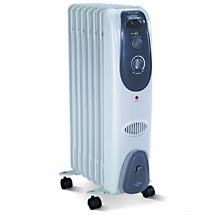
OIL- FILLED RADIATOR
DeLonghi EW7707CM Safeheat Oil-Filled Radiator features Patented Easy Snap Wheels, Adjustable Thermostat and Three Heat Settings
$54.04
Available from Amazon
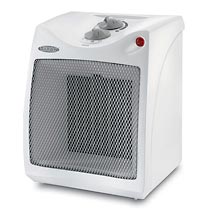
Lasko Ceramic Heater
Compact yet powerful, this ceramic heater sports a thermostat that lets you choose how much heat you want.
$22.49
Available from Amazon
Toe Kick Heater
Qmark QTS1500T Electric Kickspace Heater (120 Volts)
$156
A toe-space heater will fit where no other heater will. It can be recessed into toe space areas under kitchen or utility room cabinets or into the soffit area above them.
It can also be recessed into the risers of a stairway or under the vanity in the bathroom. It is convenient for checkout counters, ticket or toll booths and many other places where no other heater seems to fit.
Hopefully this has been helpful in giving you some new ideas on how to heat your new tiny space.

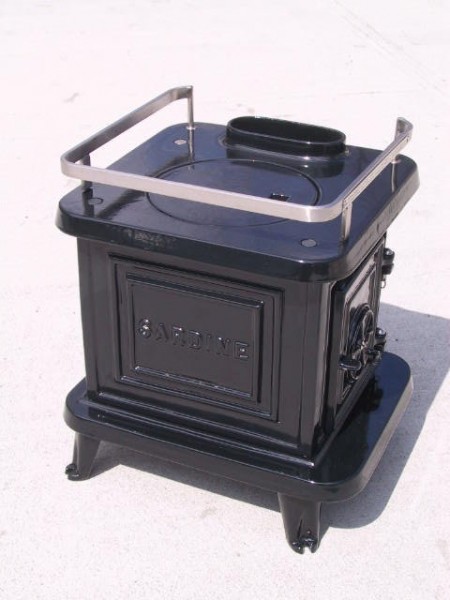
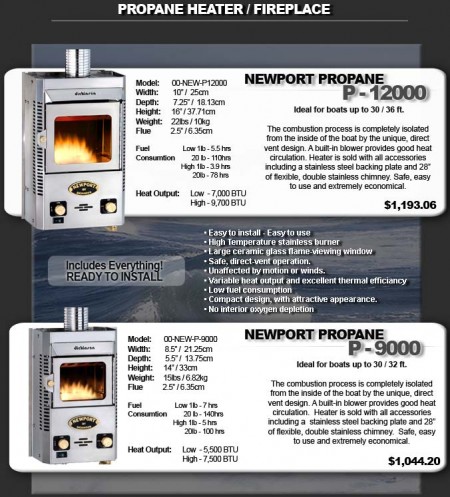
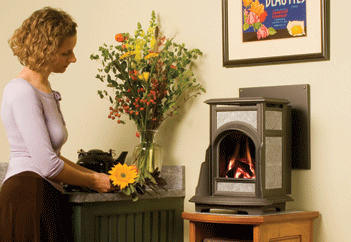
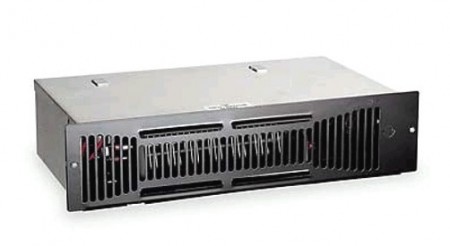
The phrase “great minds think alike and fools seldom differ” has new meaning to me now. 🙂 I just started my own blog relating to small houses, today. I’ve also noted that many of the homes and items (e.g. Jotul stove) featured also figure in my favorites listings on my own computer. This is extremely validating. Rather than repeat what you’ve already done, I’d like to include a link to your blog on my own. If you’re open to this, leave me a reply here on your blog or on mine smallhousemusings.blogspot.com Cheers!
Ketdryn, why don’t you also put a link to your blog…? Ron
Hi Ketdryn,
Yes, please include a link from your site. I will also add one from mine to yours. Good luck in your new blog and in spreading the word on small homes.
Kent
Most of the sources you’ve listed are radiant heat sources — which is good, because radiant heat is the most pleasant kind, but also somewhat different than the forced air heat that most Americans are used to, in that areas that are “out of sight” of the heater (e.g. the inside of the bathroom, which is behind walls) will be noticeably cooler.
Of course radiant heat does heat the air too, but it takes a while to do so and even in a very very well insulated space there can be inequities. We anticipated this effect a bit in the bathroom of my tiny house project, and put in a motel-style heat lamp for occasional use, but it’s just barely enough (especially considering the concrete floor).
If I was doing a new house of any kind I’d consider radiant electric heat in the floor. It might not be the most efficient, but it really would be nice.
Hi Bottleman,
Sorry it has taken me so long to respond. I really appreciate your input as you are actually living the tiny house lifestyle.
Radiant heat sounds like a great idea, even if it takes longer. I’ll do some research on it and see how it would apply to small spaces.
P.S. – I would like to do a article on you and your home in the near future if you would be interested.
Kent
Hi Kent- sorry it took me a while to notice your comment above. Sure you can do a piece if you want. Cheers!
Several companies produce a “toe-kick heater” which can fit in the toe-kick area of a kitchen cabinet. They are compact and effective. A toe-kick heater can be placed above or below a cabinet, inside walls, etc.
Happy heating.
Hi. I am most interested to follow your blog. Why? I am nearly 60 years old and own a beautiful small forested lot in northwest Arkansas, near the university. It is my plan to build a “jewel of green architecture” cottage, as my retirement home, of approx 800 sq ft, on my lot. It will be, as much as possible, passive solar, built with as many recycled materials as I can lay my hands on. There is only myself and my little dog, as I am very unlucky in love, so I am sure that the 800 sq ft will be more than adequate. All doorways will be 42 inches wide and other senior citizen considerations will be included. Thank U for your blog… U have an admirer in Arkansas. Kind regards, SD
Hi Mr. Deen, I saw your comment from 2009 recently regarding your lot in Arkansas. I have been looking for land and I am interested in Arkansas, so would you mind telling me if you went through a real estate agency or did you find your land yourself? Have you finished your home already? Thank you.
Helen from Texas
I imagine tiny house living is similar in some ways to living on a small boat. I have cruised on my 26-foot sailboat in winters in North and South Carolina where temps go down to the 20’s and 30’s.
My primary source of heat has been anthracite coat burned in a “Tiny Tot” stove by Fatsco (http://www.fatscostoves.com/). It takes some doing to get hard coal to start and stay burning, but I think it’s well worth it.
I have been researching the tiny house idea for a couple of years now and about to set out on an adventure of designing and building my own. The source of heat will be a low voltage radiant floor heat….price wise it will be just under $500 dollors and that will be paid back in time due to the efficent use of energy. As we all age our own body plumbing goes through changes….the blood just may not flow to our lower body parts as well…i.e. our feet. Radiant heat provides a low cost to install for dyi guy, lower energy cost to operate, because heat rises, you stay warm while sitting….so your feet and body stay warm without having to jack up the heat on really cold days or nights…..I wish radiant floor heat was the heat of choice for builders…when building for lets say anyone over 50.
Stay warm and happy building
P.S. check out Z-mesh
Hi Bob, Your comment is from several years ago, so I don’t know if this will reach you. I long ago learned the economy of heating only where I am. To that end, since I work from home, I purchased an IndusTool heated mat. They’re made for warehouses so workers can stand on the durable heated surface instead of cold concrete. It draws the same power as a 65 watt lightbulb, and keeps my feet and legs WARM. I have a second that I put on the surface of my desk with a towel on top when it gets really chilly. I have found them for friends on sale in warm months. This is what it looks like. I bought both mine off eBay: http://goo.gl/ER2tOD
hi, i am interested in feedback anyone may have on heating a 600sq ft cabin. I have a separate basement (same size ) that has to be heated as well. There are no walls in either floor. My objective is to prevent the pipes from freezing during the winter. I was told about a couple of options. 1 ) A company called Alpine has the following…..wall furnace, console room heater and baseboard elect hearter. 2nd option is a product called Mr. Slim. Mitsubishi is the manufacture. Any feedback would be appreciated. Thank you
I have a 700 sq ft house on the side of a little mtn here in the Berkshires. I have radiant heat with propane. It’s been great, but it fails sometimes. I think maybe the temp here drops so fast that it can’t keep up and once the temp falls below 45 in the house, the thermostat fails. I have an alarm set up to call me when this happens, but any suggestions on how to keep this from happening. I also am interested in how I could NOT heat the cabin in winter but possible put in a pellet stove and just heat and turn on water when we do get there. We can only go 2 weekends a month at this point.
Any creative tiny building thoughts???
Maggie in Mass
Hi Maggie,
I have a 384 sq. ft. cabin that I only use 2 months of the year. When I’m leaving I shut all the windows, fasten a bucket over the chimney pipe, then crack open one small window on the non-weather side. It does freeze, but I drain my gravity-feed water system, and have never had a problem. It’s in very, very wet part of the world on the West Coast of Canada. Never had any problems with mold or musty smells. I shrink bag all my linens.
Hopefully this will help.
Hi again Maggie,
Forgot to say that I heat the cabin with a small wood stove that heats it up very quickly. Firewood is less expensive than pellets and quieter – no motor operating.
Barb
I love to heat with wood. It just feels warmer for some reason. Must be the whole guy with fire thing lol!
Did you see the New Shipmate stoves on ebay? they are for boats but a perfict fit for tiny houses!
They look really nice!
whm
Those Shipmate Stoves are beautiful!!! I like the black porcelain one. They seem reasonably priced as well. T
A roommate urged me to check out this site, brill post, fascinating read… keep up the cool work!
I’m renovating/upgrading an ’80s era 14 x 60 mobile home in the Pacific NW, and am loving all the info on your web site. In my retirement, I downsized from a 2400 square foot house. Rather than building a house, I built a 16 x 22 violin shop (yes, I make violins), and am planning to put in one of those tiny wood-burning boat stoves to burn my wood scraps and make it cozy when I’m working on instruments. (Currently I use one of those electric oil/radiator type heaters to keep continuous heat/humidity when I’m not working out there.) Eventually I will convert the shop to my living space. My ultimate goal is to be off grid and totally self-sufficient on my 1.5 acres.
Thanks for this great web site and all the information, links, etc. I’m getting loads of ideas for both the mobile home and the shop!
I am building a tiny house of 200 sq ft (10’x20′) with a story and a half. I want to go electric heat on both levels, just wondering what the best idea would be ?
I built a 12X20 “shed” in my back yard and am considering the options. I heat my main house with wood, it’s about 800 square feet of old post and beam, possibly an old barn converted into a house which I’ve been fixing up over the years. The Shed replaces the bedroom I tore off the house because it was rotted and poorly built. The backup heat source is a miller kero furnace which I hate and rarely use. I will probably go with a woodstove but also am thinking about a direct vent propane unit and would seriously love to have radiant floor heat. There is an insulated crawl space which I can get under but will be a pain. I’ve also considered building a heat grabber. I’d like to spend as little as possible but still stay warm in the Beautiful blistery cold northeast, upstate NY.
I’m looking for tiny, tiny woodstove. It’s autumn 2011… and those prices have skyrocketed. Base price Sardine stove, no extras, is now $1090 plus tax & shipping. Oy.
I have a Dickinson Alaskan version of the diesel stoves for sale on craigslist. Check it out instead of wood. Less dust and maintenance
Also, there are small electric heaters now that have real looking flame effects such as this infrared electric fireplace. Having a warm room with a real looking fireplace still feel more realistic.
Helpful list though!
For electric radiant heat, check out Stokehole Stone Stoves. http://www.thestokehole.com/site43/index.php/products/18-electric-soapstone-heaters
Gas and electric heating is quite expensive. It is better to keep warm by wood burning fireplace- inexpensive, warm and beautiful.
Save a bundle ! http://www.northerntool.com/shop/tools/product_200394664_200394664?cm_mmc=Google-pla-_-Heaters%2C%20Stoves%20%2B%20Fireplaces-_-Wood%20Stoves-_-172921&ci_src=17588969&ci_sku=172921&gclid=CP-K-er-q7oCFclDMgodLlMAYQ
Check the clearances on that stove, way too much for most tiny spaces though not bad for small. Not the best stove for emissions either.
Is anyone else using Dickenson Marine’s Newport Propane P 12000? I just put one in our small off the grid cabin but even hooked up to a deep cycle battery to run the fan it is not putting out anywhere near 9700 BTU’s on high. If anyone one else has one I’d love to know how it’s working out for you and what size space you heat with it. thanks!
Randy, my neighbors here at the marina in MN have a Dickenson on their houseboat, and are unimpressed with it. It does not put out near the heat claimed, and the burn times on their website are wildly optimistic. I was considering one for my boat, but I am much happier with my Mr Heater Portable Buddy than they are with their Dickenson, at 7 times the price.
This is a great article. There are a lot of ways to heat your home. I think a great way is using propane because you also save energy. I decided to do this last winter and it really helped my electricity bills. I decided to research Propane Suppliers in PA to find some great options before using propane as my main heat provider.
We have the Jotul 602 for our 510 square feet cabin. We live in it full time and the Jotul is amazing. It takes about 1.5 hrs to heat the house from 40 up to 85. It is fairly efficient too. yesterday it was around 15F for most of the day and when heating it for about 11 hrs total we used about 10 small pieces of pine. We let our house stay unheated during the day as there is no real risk of freezing. If we are going to be gone for the weekend, we just drain all the water out the house and leave it be.
We also have the Jotul 602 in our 700 sq ft cabin in the woods of western NC. We get snows and temps near zero in the winter, and this little thing heats us very nicely. I usually get a “truckload” of hardwood every year and can get through most winters with it and my Jotul. It is very efficient, easy to use and takes up almost no space.